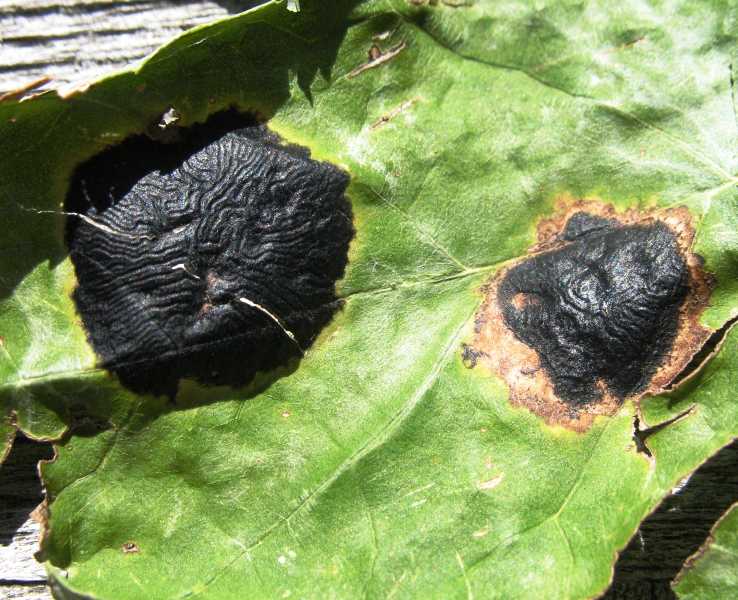 | Close-up of fungal tar spot on sugar maple (Acer saccharum); note the characteristic ripples or wavy indentations in the black, tarry surface of the lesion |
Leaf spot is a common descriptive term applied to a number of diseases affecting the foliage of ornamentals and shade trees. The majority of leaf spots are caused by fungi, but some are caused by bacteria. Some insects also cause damage that appears like a leaf spot disease. Leaf spots on trees are very common and generally do not require spraying. Leaf spot may result in some defoliation of a plant. An established plant can tolerate almost complete defoliation if it happens late in the season or not every year. Small or newly planted trees that become defoliated are more at risk of suffering damage until they become established.
Symptoms and Diagnosis
The chief symptom of a leaf spot disease is spots on foliage. The spots will vary in size and color depending on the plant affected, the specific organism involved, and the stage of development. Spots are most often brownish, but may be tan or black. Concentric rings or dark margins are often present. Fungal bodies may appear as black dots in the spots, either in rings or in a central cluster. Over time, the spots may combine or enlarge to form blotches. Spots or blotches that are angular are generally referred to as anthracnose (see entry on "Anthracnose of Trees") Leaves may yellow and drop prematurely.
Life Cycle
The organisms that cause leaf spots survive in fallen infected leaves and twigs. Some may remain in dead twigs on the tree. Most damage occurs in spring. During wet weather, spores may splash or be windblown onto newly emerging tender leaves where they germinate in the moisture and infect the leaf. Overhead watering can also provide prolonged wet periods that are ideal for spreading leaf spot diseases.
Integrated Pest Management Strategies
1. Live with the disease. Most trees tolerate leaf spots with little or no apparent damage. A tree affected early in the year will re-leaf and the new leaves may not be affected. Only if defoliation occurs three or more years in a row will most established plants be adversely affected.
2. Remove infected leaves and dead twigs. Raking up and disposing of infected leaves as they drop and pruning out dead twigs can help control the disease by removing spores that can reinfect the new leaves. This is not a cure but may help limit infection by reducing the total amount of inoculum.
3. Keep foliage dry. Avoid overhead watering. Use soaker hoses or water early in the day so the foliage can dry off before night. Watering can also spread the disease by splashing. Pruning plants to allow for good air circulation and reducing crowding will also help keep the foliage dry.
4. Keep plants healthy. Since most plants can tolerate some defoliation, keep them in good health so they can rebound quickly. Avoid over fertilizing by testing the soil first. Abundant, young, tender growth is very susceptible to attack by disease and insects. Overuse of nitrogen can cause an abundance of succulent growth.
5. Use fungicides if needed. In rare cases of severe infection and where the size and value of plants make it practicable, applications of fungicides may be helpful. Sprays will not cure infected leaves. Therefore, once the damage is noticed, spraying may have limited value. Spraying generally needs to be started as buds break in the spring and repeated at 10–14 day intervals. Recommendations will vary by disease and fungicide used. Have the disease identified before purchasing a control product.
6. Replace the plant. Though a drastic measure, many gardeners find it less bother and more rewarding to replace a plant that is continually plagued with leaf spot diseases. Either replace with a different kind of plant or a variety that is more resistant or tolerant of disease. A nursery can help you in your selection.
Organic Strategies
Strategies 1, 2, 3, and 6 are strictly organic approaches. Using an appropriate organic fertilizer would be a viable organic approach to Strategy 4. For an organic approach to Strategy 5, consult the Organic Materials Review Institute (OMRI™) for appropriate organic copper products.
More images:
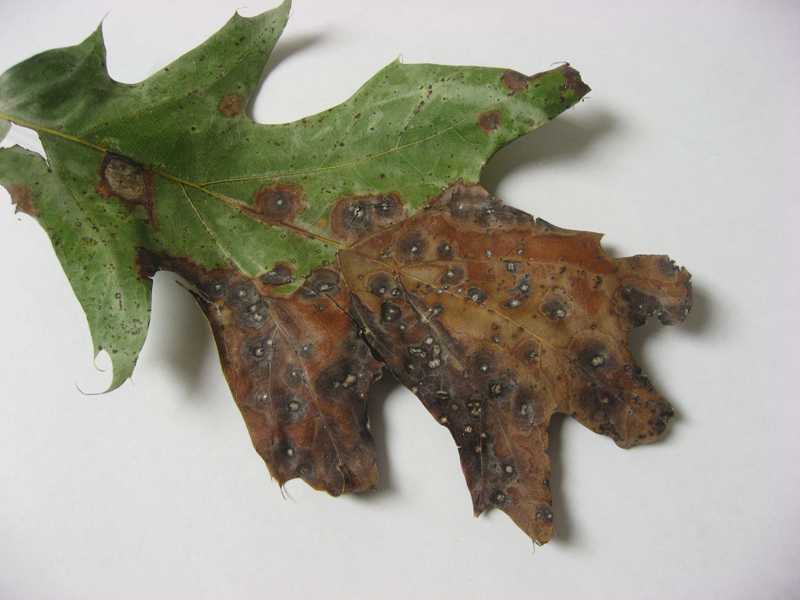 | | Actinopelte tubakia leaf spot on oak (Quercus) | | 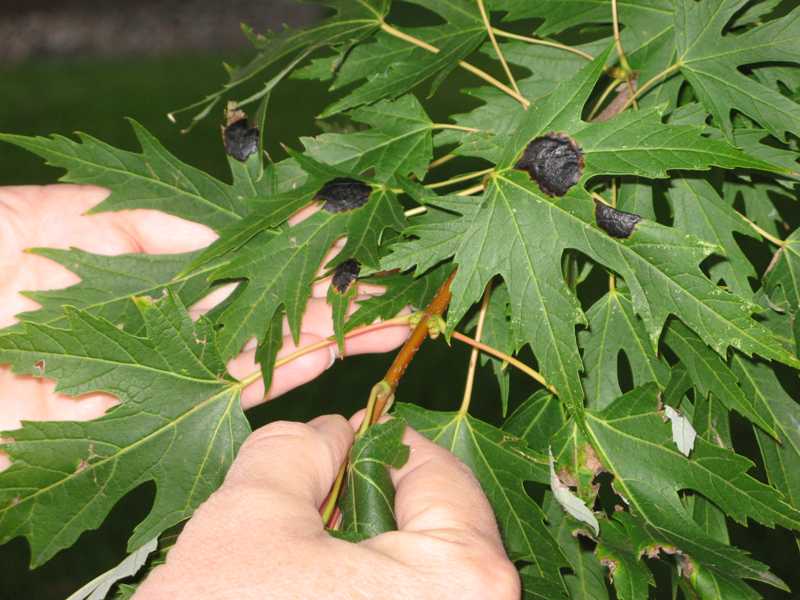 | | A fungus called tar spot caused the large black lesions on the leaves of this silver maple (Acer saccharinum) | |
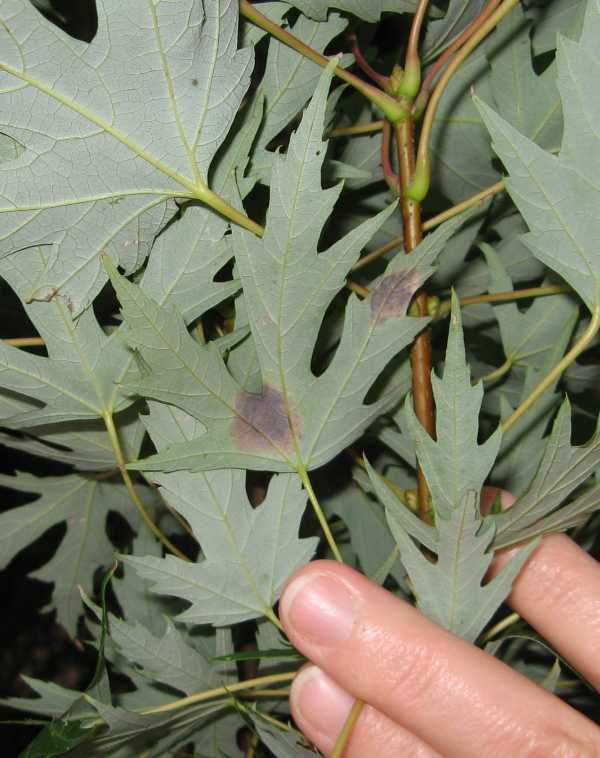 | | Tar spot on the underside of a silver maple leaf (Acer saccharinum) | | 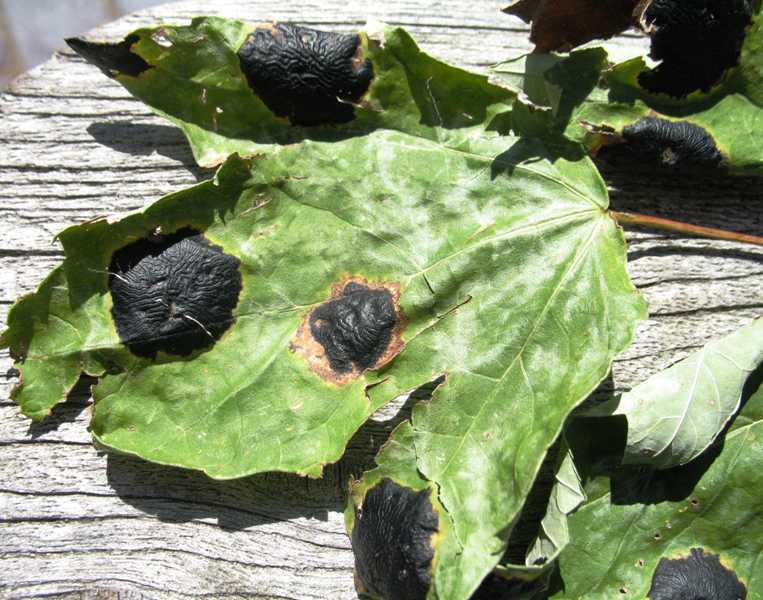 | | Fungal tar spot on sugar maple (Acer saccharum) | |
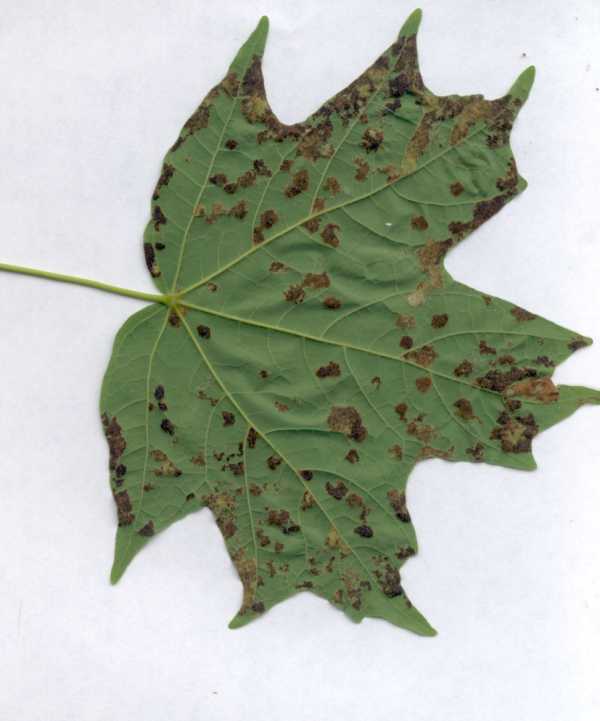 | | Unidentified fungal leaf spot on maple (Acer) | | 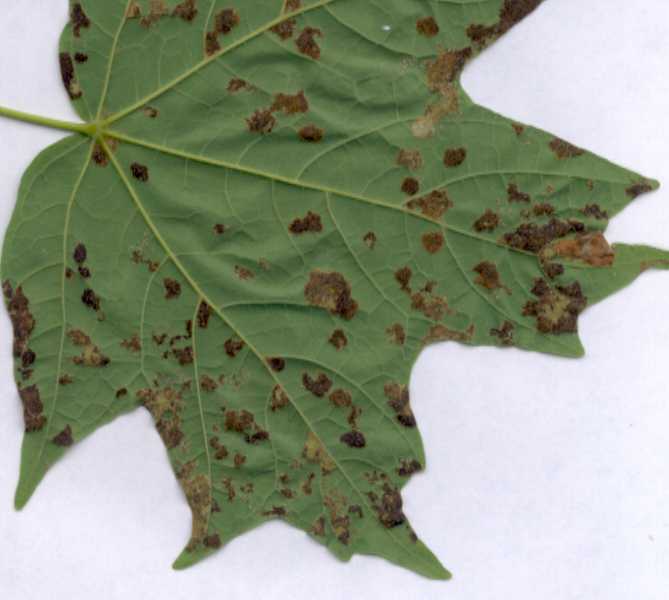 | | Unidentified fungal leaf spot on maple (Acer) | |
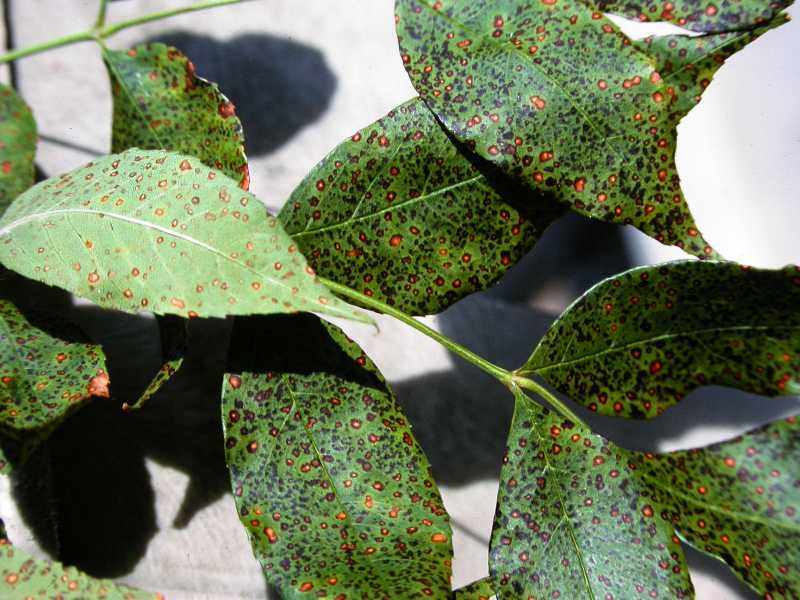 | | Unidentified fungal leaf spot on ash (Fraxinus) | | 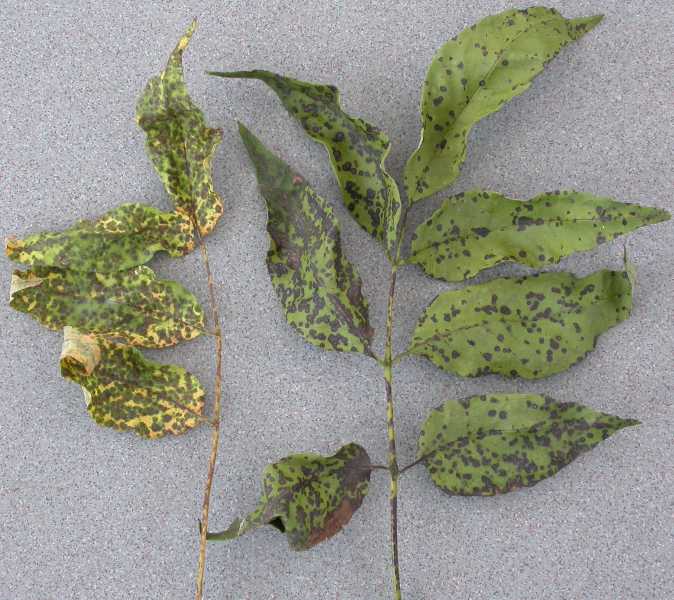 | | Unidentified leaf spot on ash (Fraxinus), upper leaf surface | |
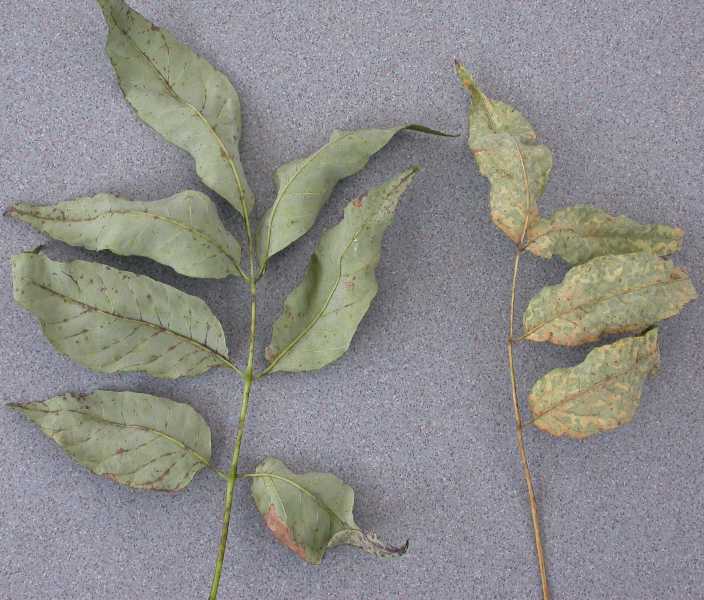 | | Unidentified leaf spot on ash (Fraxinus), lower leaf surface | | 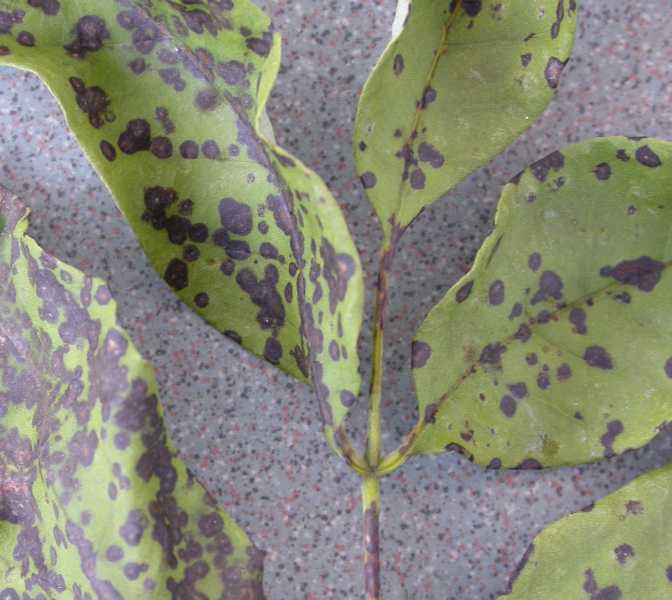 | | Unidentified leaf spot on ash (Fraxinus), upper leaf surface | |
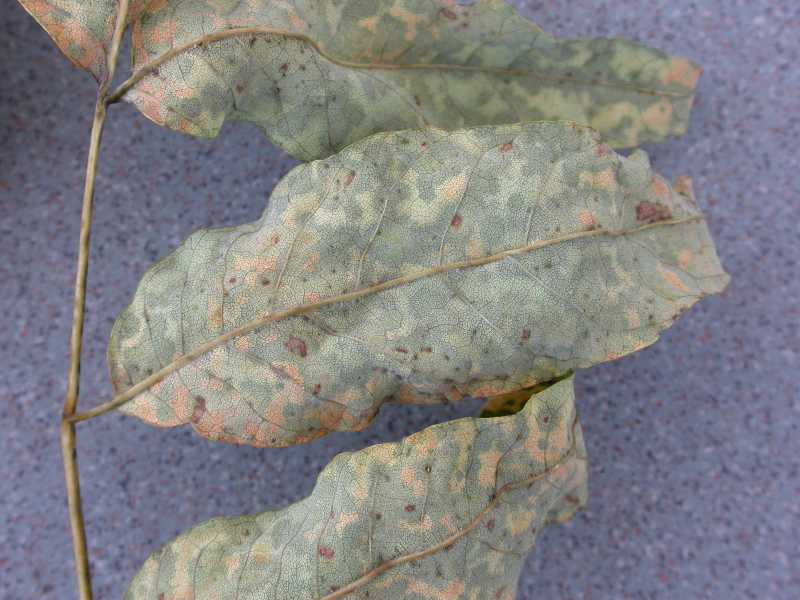 | | Unidentified leaf spot on ash (Fraxinus), lower leaf surface | | 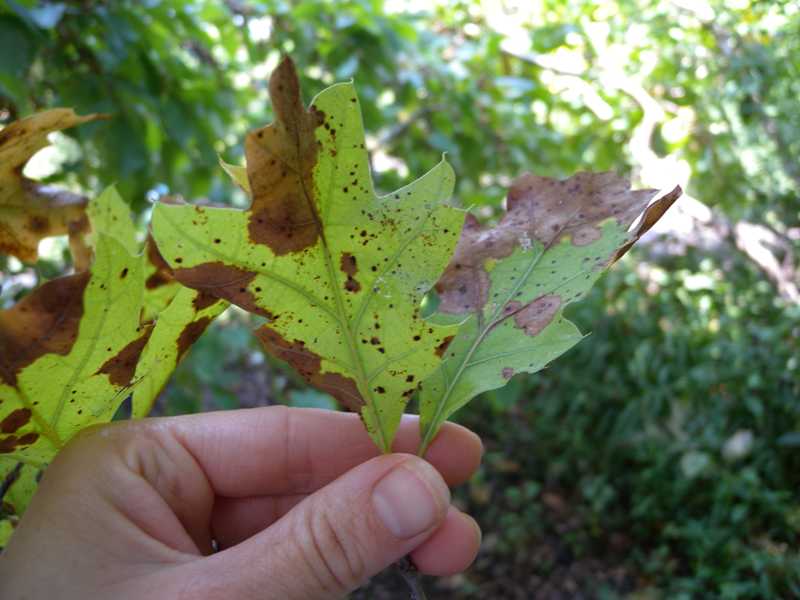 | | Tubakia leaf spot of maple-leaf oak (Quercus acerifolia) | |
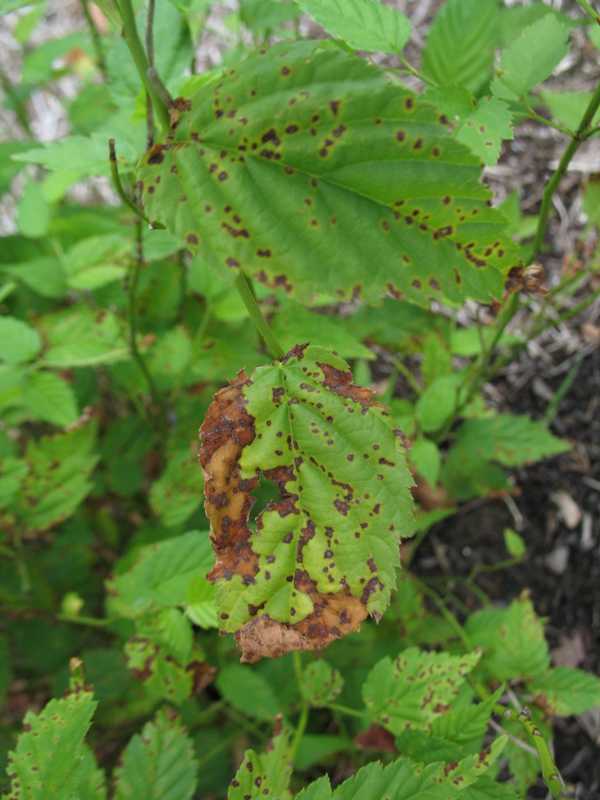 | | Fungal leaf spot on kerria (Kerria) | | 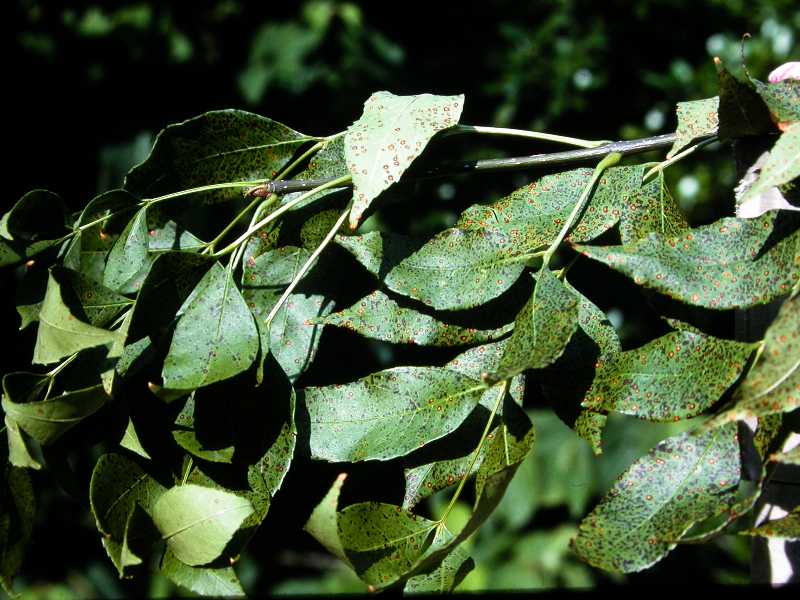 | | Unidentified fungal leaf spot on ash (Fraxinus) | |
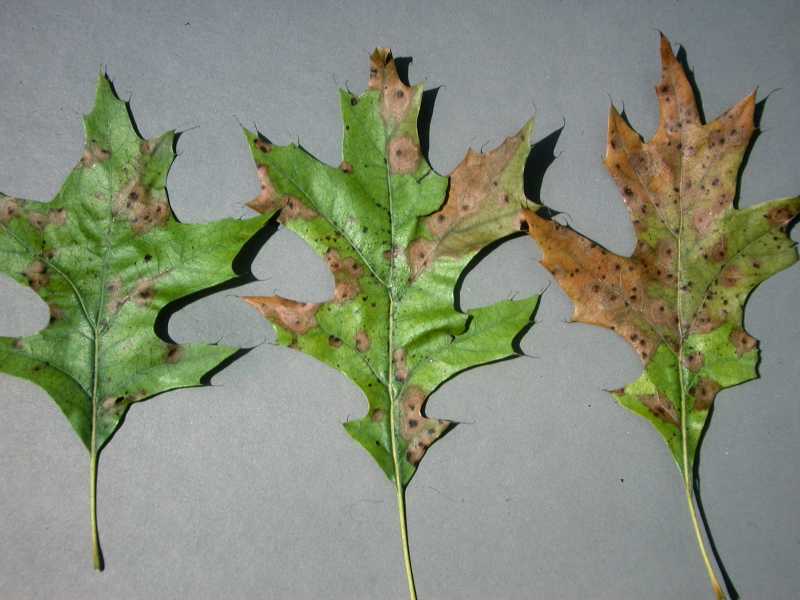 | | Unidentified fungal leaf spot on pin oak (Quercus palustris); note progression of spots from blotch to blight (from left to right) | | 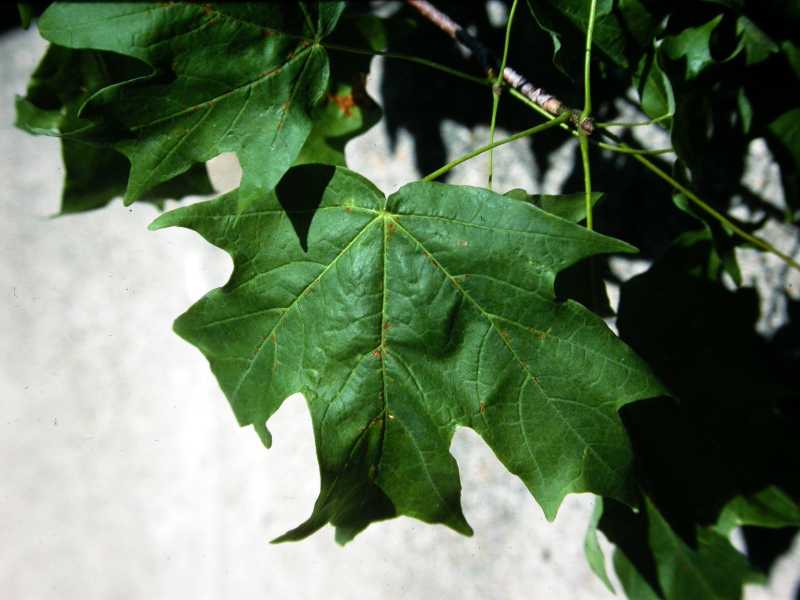 | | Unidentified fungal leaf flecks on maple | |
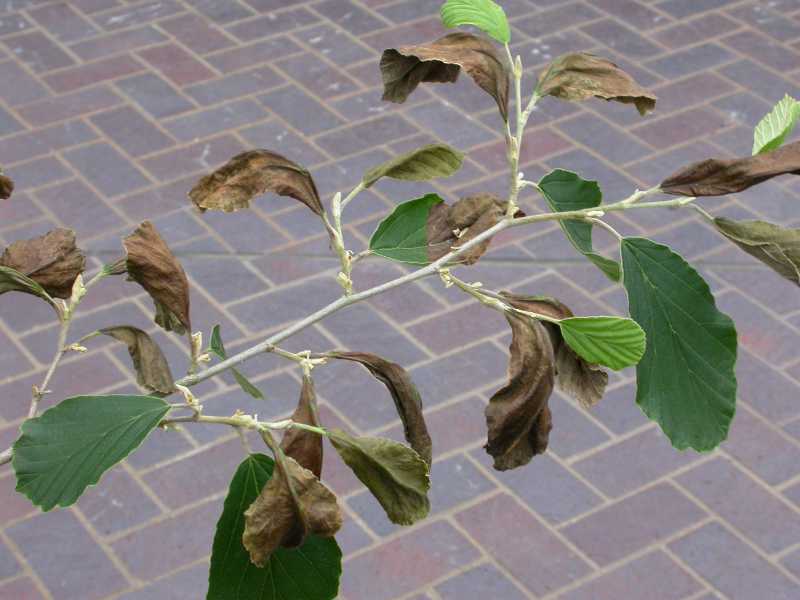 | | Possible leaf blotch of witch hazel, Phyllosticta hamamelidis, on witch hazel (Hamamelis) | | 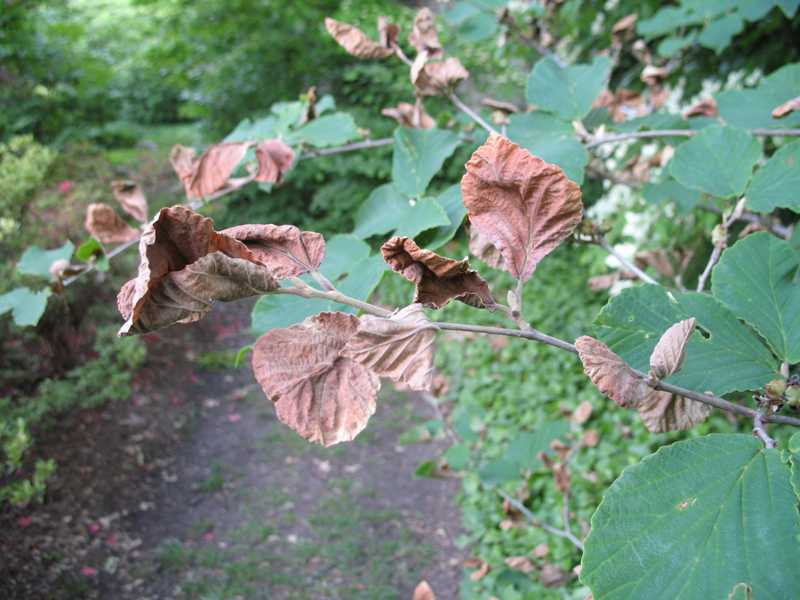 | | Entire branch tip of witch hazel (Hamamelis) blighted, possibly by Phyllosticta hamamelidis, leaf blotch of witch hazel | |
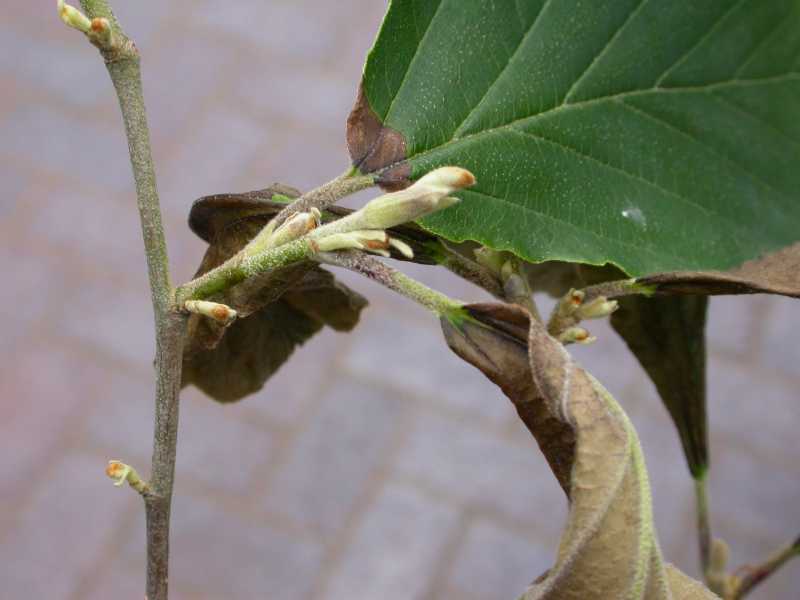 | | Blotch starting near petiole on witch hazel leaf (Hamamelis) possibly caused by Phyllosticta hamamelidis, leaf blotch of witch hazel | | 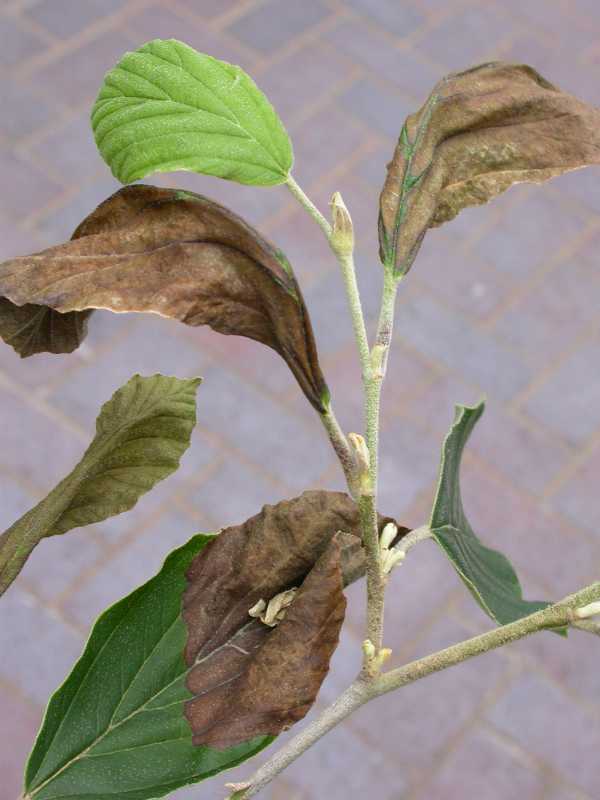 | | Possible leaf blotch of witch hazel, Phyllosticta hamamelidis, on witch hazel (Hamamelis) | |
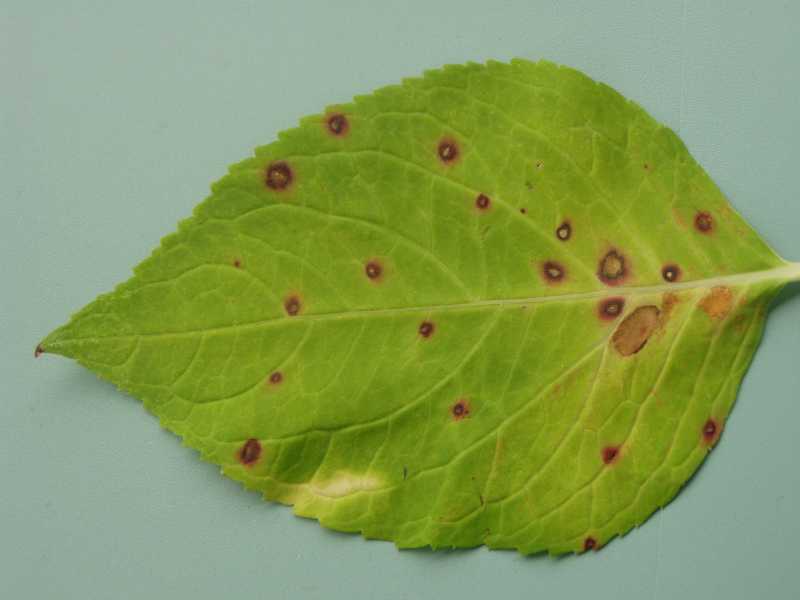 | | Cercospora leaf spot on upper leaf surface of Endless Summer big leaf hyrdrangea (Hydrangea macrophylla 'Bailmer') | | 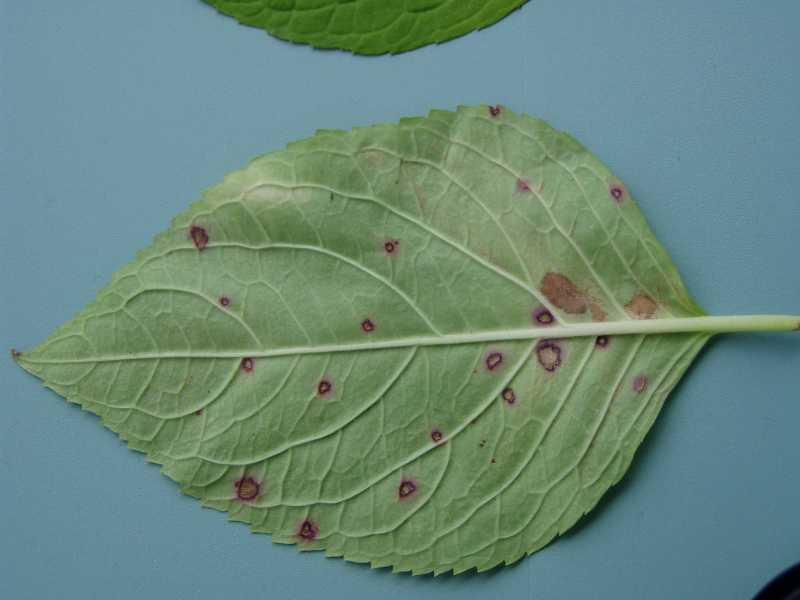 | | Cercospora leaf spot on lower leaf surface of Endless Summer big leaf hyrdrangea (Hydrangea macrophylla 'Bailmer') | |
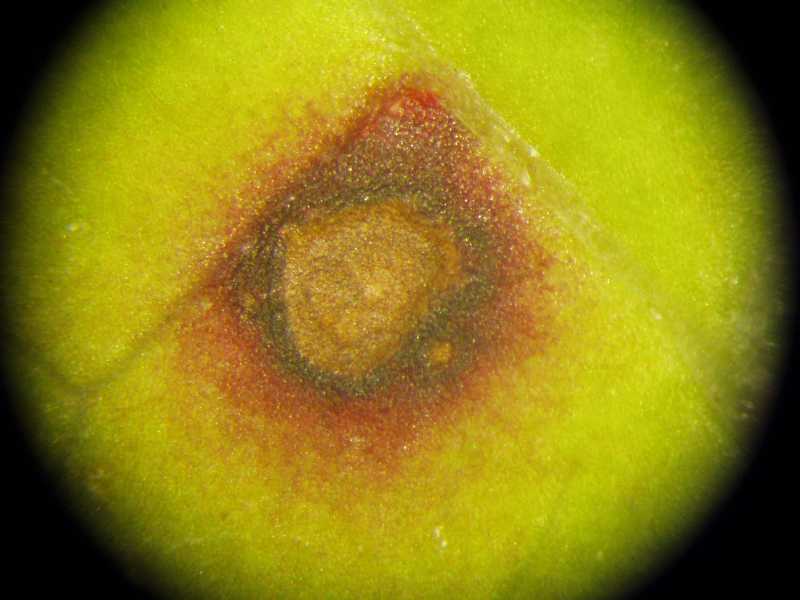 | | Close-up of cercospora leaf spot on Endless Summer big leaf hyrdrangea (Hydrangea macrophylla 'Bailmer'); note, purple halo around spot | | |























